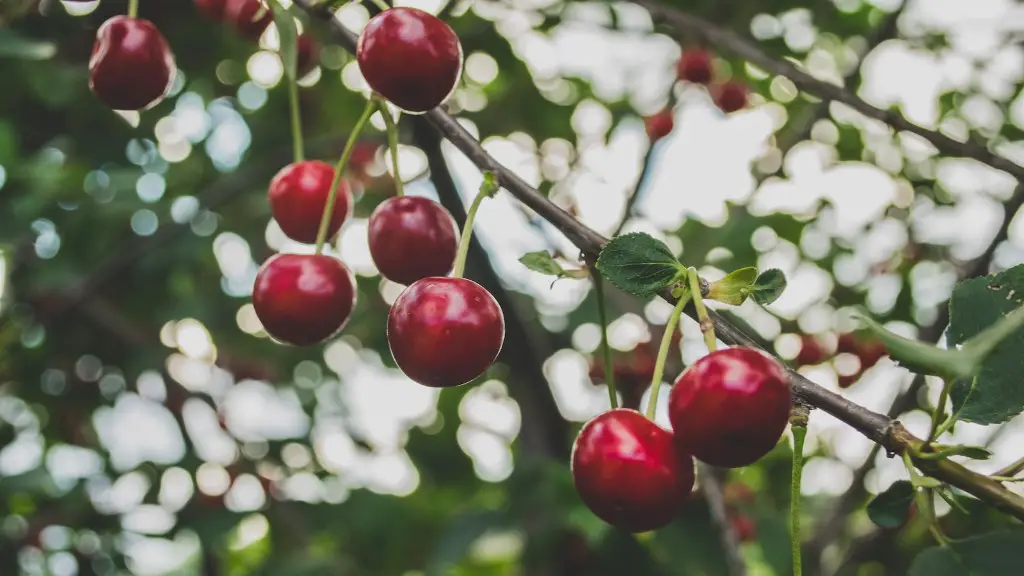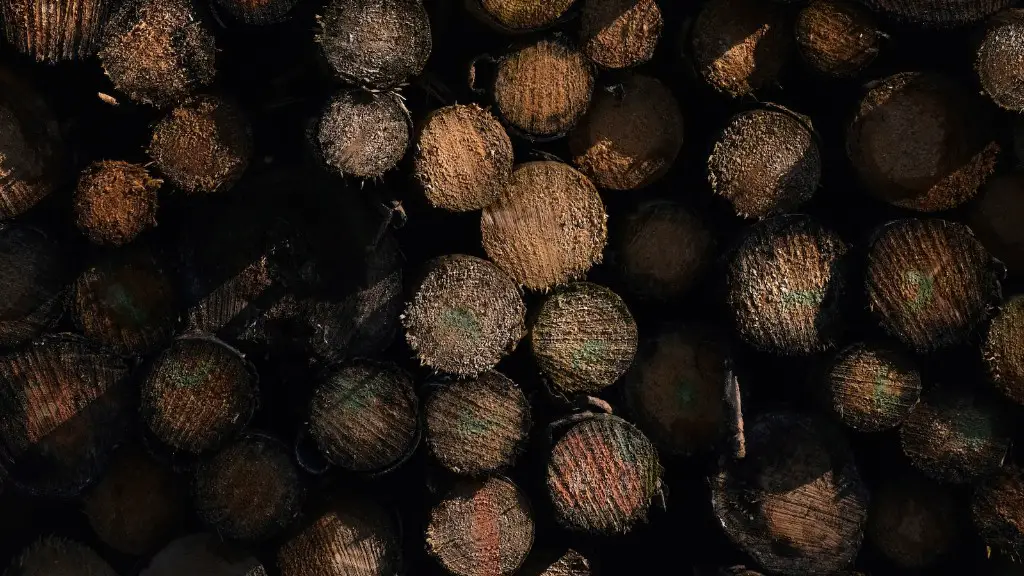Amount of Sunlight
Cherry trees require 6 to 8 hours of direct sunlight each day in order to thrive. The amount of sunlight a tree may receive can vary considerably by geographic location and season, so it is important to understand your local environment to ensure proper growth. Teh sun serves as an energy source for the tree to take in from its leaves, meaning that even if total sunlight hours are not exceeded, the tree will still require sufficient light for photosynthesis. Additionally, cherry trees can benefit from extra sunlight in terms of flavor, such as sweeter fruit in hte summer and autumn.
Differences in Types of Sunlight
There are two general types of sunlight – direct and indirect. Direct sunlight consists of direct beams which are unfiltered, while indirect sunlight is diffused and filtered light coming from the sky. Direct sunlight is more direct and intense, meaning it provides more energy in the form of photosynthesis, which is why cherry trees are ideally suited to 6-8 hours of direct sunlight. However, during the winter months, some indirect sunlight during the day is still beneficial for cherry trees.
Growing Conditions
Cherry trees are generally suited to climates with warm summers and cool winters. They need a good soil with adequate drainage, necessary acidity levels and plenty of organic material. Although soil pH is important, it should not be excessively acidic as this can affect the growth and quality of the fruit. A well-drained, sunny location is essential for any type of fruit tree, as adequate water and light will ensure the tree’s health. In addition, cherry trees benefit from wind protection, so planting in areas where the tree will be sheltered is recommended.
Tending to Cherry Trees
It’s important to maintain a regular schedule of pruning and fertilizing in order to promote healthy growth. Pruning should take place every two to three years, as developing fruit needs space to grow. The branches should also be thinned regularly to ensure more light and air circulation for the tree. As for fertilizer, nitrogen-rich fertilizer should be applied during the spring and late summer to encourage more rapid growth. Supplementing the fertilizer with phosphorus will help promote the development of healthy fruit.
Winter Care
During cold winters, it is important to give cherry trees extra attention. When temperatures dip below freezing, it is essential to wrap the tree with a protective wrap to protect the roots as well as the trunk. Wrapping the trunk can also help conserve warmth and reduce the chance of wind damage. Furthermore, you should check the soil moisture weekly during the winter months and water if it is dry. Even if the tree doesn’t produce fruit, it still needs to be watered.
Identifying Problems
In addition to adequate sunlight, soil, and water, cherry trees need to be protected from pests and disease. Your trees can become infected with a variety of fungal diseases, such as powdery mildew, and insect pests such as aphids. It is important to check for signs of trouble such as wilted leaves and discolored bark. Furthermore, regular pruning can help avoid overcrowding, which can lead to poor air circulation and, subsequently, increased chances of pest and disease problems.
Monitoring the Sunlight
To be sure that your cherry tree is receiving enough sunlight, you should check the amount it receives each day. This can be done by keeping track of hours of direct sunlight the tree is receiving each day and assessing general growth, as well as the flavor of the fruit. If it appears that the tree isn’t receiving enough sun, you may want to adjust the location of the tree or add additional protection and insulation to ensure that it is receiving the necessary amount of sunlight.
Fertilizers and Soil Preparation
Before planting a cherry tree, the soil must be prepared. This means amending the soil with compost or fertilizer and paying close attention to the pH levels. A pH level of between 6.0 and 6.5 is ideal for cherry trees, as this helps the tree absorb the necessary nutrients from the soil. Additionally, it is recommended to add some phosphorus and potassium fertilizers as these nutrients are beneficial for cherry tree growth.
Harvesting the Cherries
Cherry trees should be ready for harvest within three to five years after planting, depending on the variety. In order to know when the fruit is ripe for picking, the color, flavor and texture of the fruit should be considered. Once the cherries are ripe, they can be picked and stored for a few days. Alternatively, they can be picked and eaten straight away. Freshly picked cherries taste best, so it is best to pick only what you will eat in one day.
Pest Control
Pest control is an essential component to ensure the best possible crop. Aphids, Japanese beetles and other insects can infest or damage cherry trees and must be controlled in order to ensure a successful harvest. The best way to control pests is to use organic methods, such as introducing beneficial insects which prey on the pests. Additionally, you can use an insecticide to spray on the tree, although this should be done with caution as insecticides can be harmful to the environment.
General Maintenance
Cherry trees should be inspected regularly for signs of infection, pest infestation and general health. Pruning should be carried out in early spring to remove dead and damaged branches and promote healthy growth. Additionally, cherry trees will benefit from regular mulching with organic matter to keep the soil moist and nutrients available. Lastly, any wilted or dead leaves should be removed regularly to promote healthy growth.

